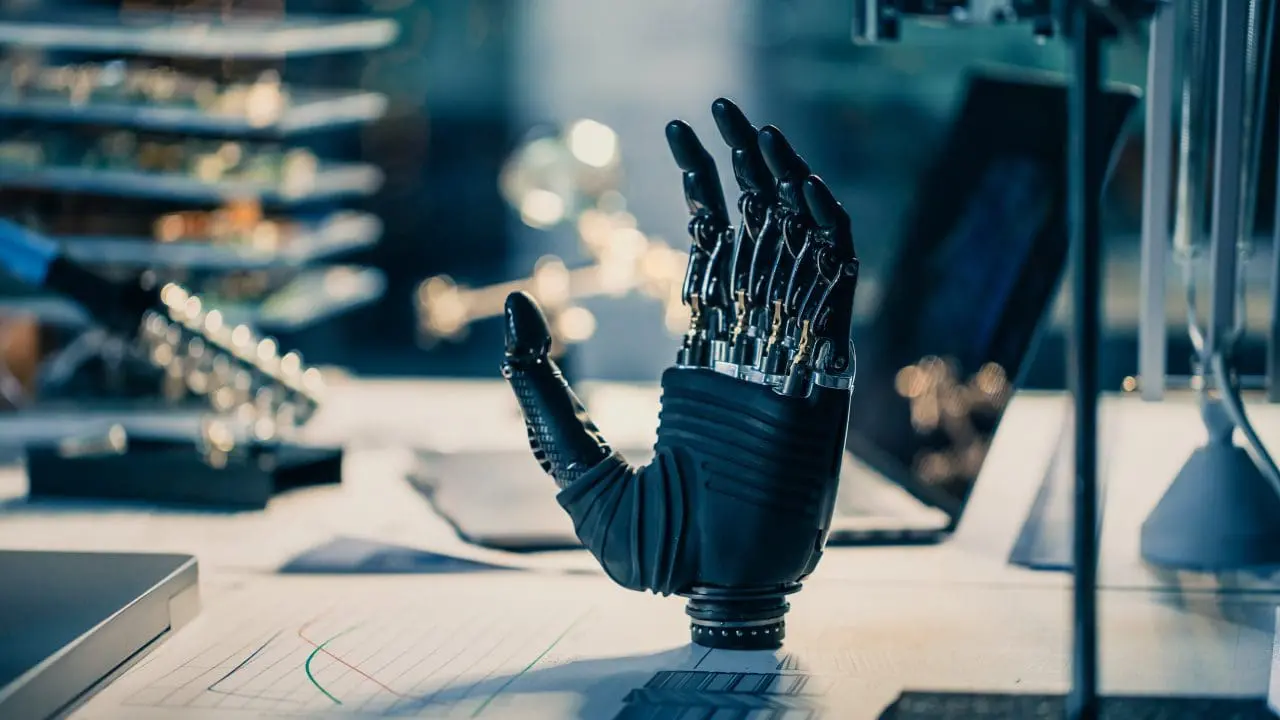

In recent years, robots have become increasingly advanced. From walking robots to self-navigating machines, robotics technology continues to push the boundaries of what is possible. Now, researchers at Stanford University are taking another leap forward with their development of a multi-layered electronic skin that can be applied to robots and prosthetics. This robotic “skin” has a sense of touch and can realign itself autonomously when cut.
Not only does this type of skin give robots greater dexterity, but it also adds an entirely new level of protection from damage. This means that robot parts are much less likely to break or malfunction due to wear and tear, thereby increasing their lifespan. Furthermore, it also adds a level of human-like sensory capability that allows robots to interact with their environment more effectively.
In addition, this technology has the potential to revolutionize prosthetic devices. By using robotic skin as a cover for prosthetics, medical professionals can now create much more realistic-looking limbs that are capable of a greater range of motion than before. This could greatly improve the quality of life for people who rely on prosthetic parts.
For those with physical disabilities, prosthetic parts have long been a source of hope and independence. However, these devices often require frequent maintenance or replacement due to wear and tear. With the development of self-healing electronic skin by Stanford University scientists, this problem is becoming less of an issue.
This type of skin has the potential to extend the lifespan of prosthetic limbs as it can repair itself when cut or damaged autonomously. This means that people who rely on prosthetics can use them for longer periods without needing to worry about repairing or replacing them so often. Furthermore, this technology also promises greater levels of comfort and realism in prosthetic limbs due to the advanced touch sensing capabilities of the robotic skin.
One of the major advancements in robotics research has been in touch sensing technology. This type of technology allows robots to interact with their surroundings using tactile feedback from sensors located on their external “skin”. Now, Stanford University scientists have taken this concept one step further by developing a multi-layered, self-healing electronic skin that can be applied to robots and prosthetics.
This robotic skin has the potential to revolutionize robotics as it offers many benefits over traditional touch sensing technology. For instance, this type of skin is much more durable than traditional sensors due to its ability to realign itself autonomously when cut or damaged. This means that robots are less likely to suffer from wear and tear which could lead to malfunctioning parts or a shortened lifespan. Additionally, this type of skin also allows for far greater levels of realism when interacting with objects in the environment due to its advanced sensing capabilities.
Overall, the development of this new type of touch sensing technology is extremely promising and opens the door for more sophisticated robots in the future. As researchers continue to push the boundaries of robotics, this type of technology could become an integral part of many robot designs.
One of the most impressive features of the electronic skin developed at Stanford University is its ability to autonomously realign itself when cut or damaged. This remarkable feature is made possible by a process called “fusion” which essentially seals any cracks in the skin using electrostatic forces. This means that robots and prosthetics covered with this type of skin are much less likely to suffer from wear and tear due to their improved durability.
This technology has exciting implications for both robotics and prosthetics alike. For robotics, it could lead to improved performance and a longer lifespan for robots due to the enhanced level of protection offered by this type of skin. Furthermore, it could revolutionize prosthetics by allowing them to be more realistic-looking and more resilient to wear and tear.
Researchers at Stanford University have created a multi-layered electronic skin that could revolutionize robotics. This type of skin is made up of multiple layers, each with different functions and capabilities. One layer acts as a protective cover while another provides sensing capabilities such as touch. These two layers are held together by electrostatic forces which enable the skin to self-heal when it is cut or damaged.
This technology offers many advantages over traditional robotic skins due to its advanced features and enhanced durability. For instance, this type of skin can be programmed to sense various types of stimuli from its environment which gives robots greater levels of interaction with their surroundings than ever before. Additionally, the self-healing capabilities of this skin mean that robots are less likely to suffer from wear and tear as it can repair itself autonomously.
The self-healing capabilities offered by this type of robotic skin could have a wide range of uses in the future. One potential application is in prosthetics where the skin will be able to repair itself if it is damaged or cut. This could potentially have a significant impact on the quality of life for those who rely on prosthetics for daily activities.
Furthermore, this type of skin could also reduce downtime and repair costs associated with robotic parts as they would no longer need to be constantly replaced due to wear and tear. Additionally this type of skin could lead to improved levels of safety for robots as they will not be affected by damage or cuts as easily.
The new electronic skin technology developed by Stanford University scientists has a range of interesting applications that could revolutionize robotics. One potential application is in the medical field where robots and prosthetics can be used to carry out delicate surgeries or provide assistance to those with disabilities. This type of skin could also be used in industrial settings, such as factories, where robots would need increased levels of dexterity and protection from environmental hazards.
Furthermore, this type of skin could also be used in military operations where it can provide enhanced protection to robots while performing dangerous missions. Additionally, this type of skin could even be applied to consumer products such as phones or tablets to make them more resilient to wear and tear.
The intelligent robot skins developed at Stanford University have great potential implications for robot design. For instance, this type of skin could enable robots to interact with their environment more effectively as they would be able to sense various stimuli such as temperature or pressure. This could potentially lead to improved levels of autonomy as robots will be able to respond to their environment without the need for external assistance.
Additionally, this type of skin could lead to improved levels of safety as robots would be more resilient to damage or cuts due to its self-healing capabilities. Furthermore, this type of skin could also enable robots to carry out delicate tasks with greater precision which could significantly reduce human labor in certain areas.
The revolutionary technology developed by Stanford University scientists could have a huge impact on the way we think about robotics. Not only could this type of skin enable robots to become more autonomous but it also has potential applications in prosthetics, medical operations and consumer products.
Furthermore, this type of skin could lead to improved levels of safety for robots as they will be better protected from damage or cuts due to its self-healing capabilities. Additionally, this type of technology could also reduce downtime and repair costs associated with robotic systems as they no longer need to be constantly replaced due to wear and tear.

This website uses cookies to improve your experience. Choose what you're happy with.
Required for the site to function and can't be switched off.
Help us improve the website. Turn on if you agree.
Used for ads and personalisation. Turn on if you agree.
This website uses cookies to improve your experience. Choose what you're happy with.
Required for the site to function and can't be switched off.
Help us improve the website. Turn on if you agree.
Used for ads and personalisation. Turn on if you agree.